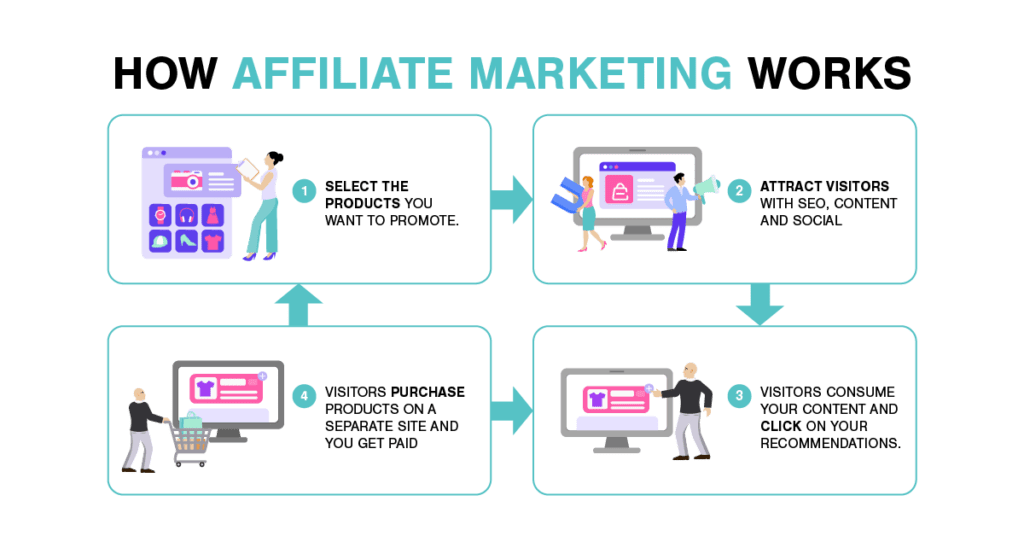Shopify is a popular ecommerce platform, powering more than 1 million businesses across the globe.
Once you’ve set up your Shopify store, its time to market it to reach new customers? Try these 16 Shopify marketing strategies to increase revenue.
1. Connect With Your Target Audience Using Social Media
Social media platforms like Facebook, Instagram, and TikTok are a gold mine for ecommerce businesses.
Research shows social ecommerce is expected to grow 300% faster than traditional ecommerce, from $492 billion in 2021 to $1.2 trillion in 2025. About half of all adults in the US purchased something through social media in 2021.
Instead of trying to be active on all the social platforms, focus your efforts on the top two platforms where you know your target customers spend time. It’s better to do well on a smaller selection of relevant social media websites than it is to do a mediocre job on all of them.
Not sure where to start? Check out what your competition is doing for a guide. Pay attention to the kinds of content they’re posting, with special emphasis on the content that gets the most engagement. You can also check out our post on Instagram marketing tips for ecommerce to start building your social media marketing strategy.
2. Grow Traffic with a Blog
One of the most popular ecommerce marketing methods is blogging. Each blog post you write is a chance to target long-tail keywords related to your niche. Each post is a chance to educate your audience about your products and services.

The more relevant content you create and share, the more you establish yourself as a credible source in the industry.
Optimizing your posts with the right keywords is a key part of content marketing, which brings in new visitors. We have a dedicated guide on Shopify blogging.
3. Boost Conversion Rate with Abandoned Cart Recovery
The Baymard Institute reports an average cart abandonment rate of 69.82%. That means 7 out of every ten shoppers will leave your site without your site without completing the transaction.
Shopify offers abandoned cart recovery features to help you remind people to come back and finish the checkout process. You can also use this as a chance to provide a discount or other special offer to sweeten the deal a bit.
Adding abandoned cart recovery is a key part of conversion rate optimization (CRO).
4. Simplify Your Workflows with Shopify Apps and Automation

The Shopify App store has a ton of great add-ons to extend your store’s functionality. Many apps are free, but some do come with additional monthly fees. You can use apps to:
- Connect social media channels to your online store
- Connect with dropshipping suppliers
- Add marketing features
- Integrate shipping and fulfillment options
- And more.
Check out our list of the best Shopify apps to help you get started.
5. Increase Organic Visibility in Google with Search Engine Optimization (SEO)

SEO is all about using search engines to bring in traffic. By optimizing your website content – blog posts, product descriptions, etc., with relevant keywords, you’ll be able to rank. With time and the proper optimization techniques, a high ranking will bring in more sales.
Shopify has some built-in SEO tools, but there are apps available to help you extend its SEO function and follow best practices, such as:
6. Build Sales with Pay-Per-Click (PPC) Advertising
With PPC, you can advertise your Shopify store to people on search engines or social media channels. You set a daily budget, choose the type of ads you want to run, the relevant keywords you want to bid on.
Then, where social ads are concerned, you choose the demographics and other information to ensure the ads are only served to your relevant audience.



If you want to reach more customers who look similar to your existing ones, take advantage of lookalike targeting when setting up Facebook ads.
7. Build Relationships and Increase Retention with a Customer Loyalty Program
It costs your business more money to obtain new customers than to sell to existing customers, so your marketing efforts should focus on customer retention. A customer loyalty program is a great way to keep those loyal customers coming back for more.
There are a lot of ways you can build this into your Shopify marketing strategy, such as:
- Adding a referral program so that customers earn a discount or free product every time they send a new customer to you.
- Allowing customers to earn points for every dollar they spend with you. Give them other chances to earn more points, such as following you on social media, liking and sharing your content, and signing up for your email marketing list.
- Offering rewards to your customers on their birthdays and anniversaries with your company.
8. Strengthen Your Brand with Social Proof
As much as we humans pride ourselves on being individuals, the theory of social proof suggests that we tend to follow the wisdom of the crowd. What that means for online marketing is that you need social proof from previous customers to help convince others to do business with you.
Forms of social proof include:
- User-generated content like reviews and testimonials.
- Business credentials
- Press mentions
9. Increase Brand Awareness with Influencer Marketing on Facebook, Instagram, and Twitter
Influencer marketing is quite common and has been around for many years. Celebrity endorsements are one of the earliest forms. But thanks to micro-influencers, brands of all sizes can take advantage of this strategy.
Influencers are those who already have established trust and credibility with the audience you’re targeting. By partnering with them, you can get your brand in front of a wider audience. Ways to collaborate with influencers include:
- Sponsored social media posts or social media takeovers
- Sponsored blog posts
- Guest blogging
- Brand ambassadorship
- Gifts/samples
Brands can also use experiential marketing in partnership with influencers to host live events, either virtually or in person.
10. Grow Your Shopify Marketing Team with an Affiliate Program

If you want to build out a sales team without the expense of hiring an in-house staff, an affiliate program is the way to go. Why? People promote your product or service, and you only pay them when they send you a lead or make a sale. You set the terms of the program.
You can create your own affiliate program with a Shopify app, or you can use a third-party platform like Shareasale or Impact to manage the program for you.
11. Share Your Product or Service with a Giveaway
Want to get people talking about your offering? Generate buzz and get it in the hands of your potential customers with a giveaway.
You can use a platform like Rafflecopter, Giveaway Ninja, or Social Boost Giveaways to manage your giveaways. Whether you have one winner or several, the contest promotion will help brand awareness.
When you create the contest, make sure you follow all relevant laws and regulations. Facebook, for instance, has specific rules about running contests and giveaways on the platform.
12. Reach Shoppers with SMS Marketing
Take your Shopify marketing to the next level by going beyond email and reaching your customers via text message. Send them special promos, share the news about sales, etc. You can use a service like ProTexting to help you manage the list.
13. Expand Your Market with Omni-Channel Selling
Selling on your own site is great because it helps you keep most of the profit. However, using other omnichannels like Amazon, Walmart, and eBay gives you a chance to leverage those platforms to reach a wider audience.
14. Gain a Competitive Edge with Your Pricing Strategy
Monitoring the competition for changes in pricing is always a way to make sure you stay on top. However, that doesn’t mean getting into a war to always have the lowest price. It’s about constantly watching and making adjustments based on the market.
The ideal pricing strategy does more than convince customers to buy. It provides value and boosts confidence in the product or service you offer.
Determine what pricing strategy your competition is using, and figure out how to make yours better.
15. Boost Revenue with Upsells and Cross-Sells
Have multiple related products? Use apps to encourage people to upgrade to the better version or add accessories to their cart. This will increase overall cart value, which boosts customer lifetime value.
16. Stay in Touch with an Email Newsletter
To build a successful ecommerce business, you must invest in email marketing. Email is still an effective marketing tool with a proven track record of providing a strong ROI.
While it’s unlikely platforms like Facebook will ever shut down completely, relying solely on social media means you’re building your business on rented land. If you ever get hacked or locked out of your account, you’ll have no way to reach your customers.
Using email automation tools, you can create a series of email marketing campaigns to:
- Welcome new customers
- Announce new products
- Send discounts and promotions
Adding email campaigns to your Shopify marketing strategy is the best way to ensure you’ll always have a connection to your customers. To get more subscribers, offer a discount for signing up to receive emails from you.

FAQs
Ecommerce competition is fierce. Any good product marketing strategy will go beyond acquiring fresh customers to keep existing customers coming back for more.
Using any combination of these Shopify marketing techniques will help grow your online business. The important thing is that you continually test and make adjustments based on what you see working.










